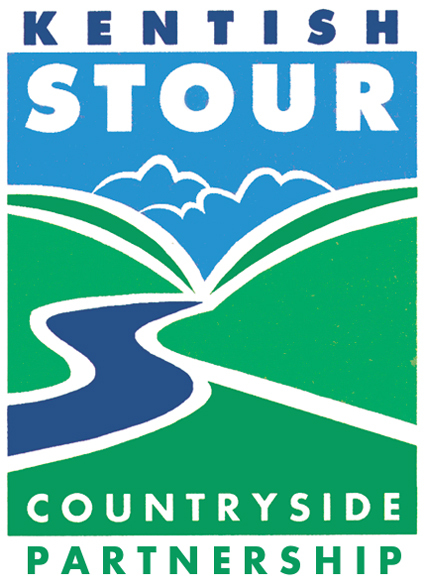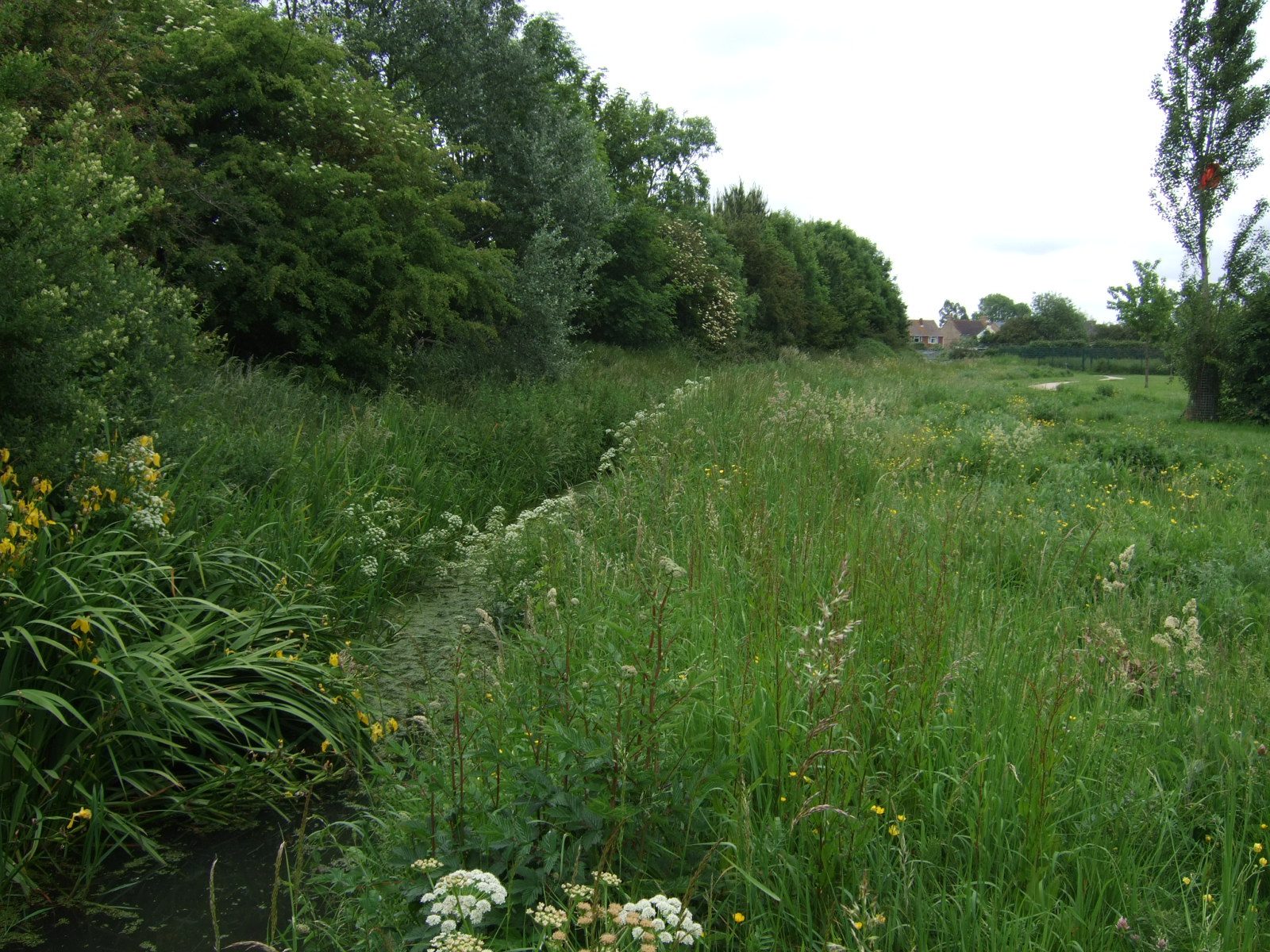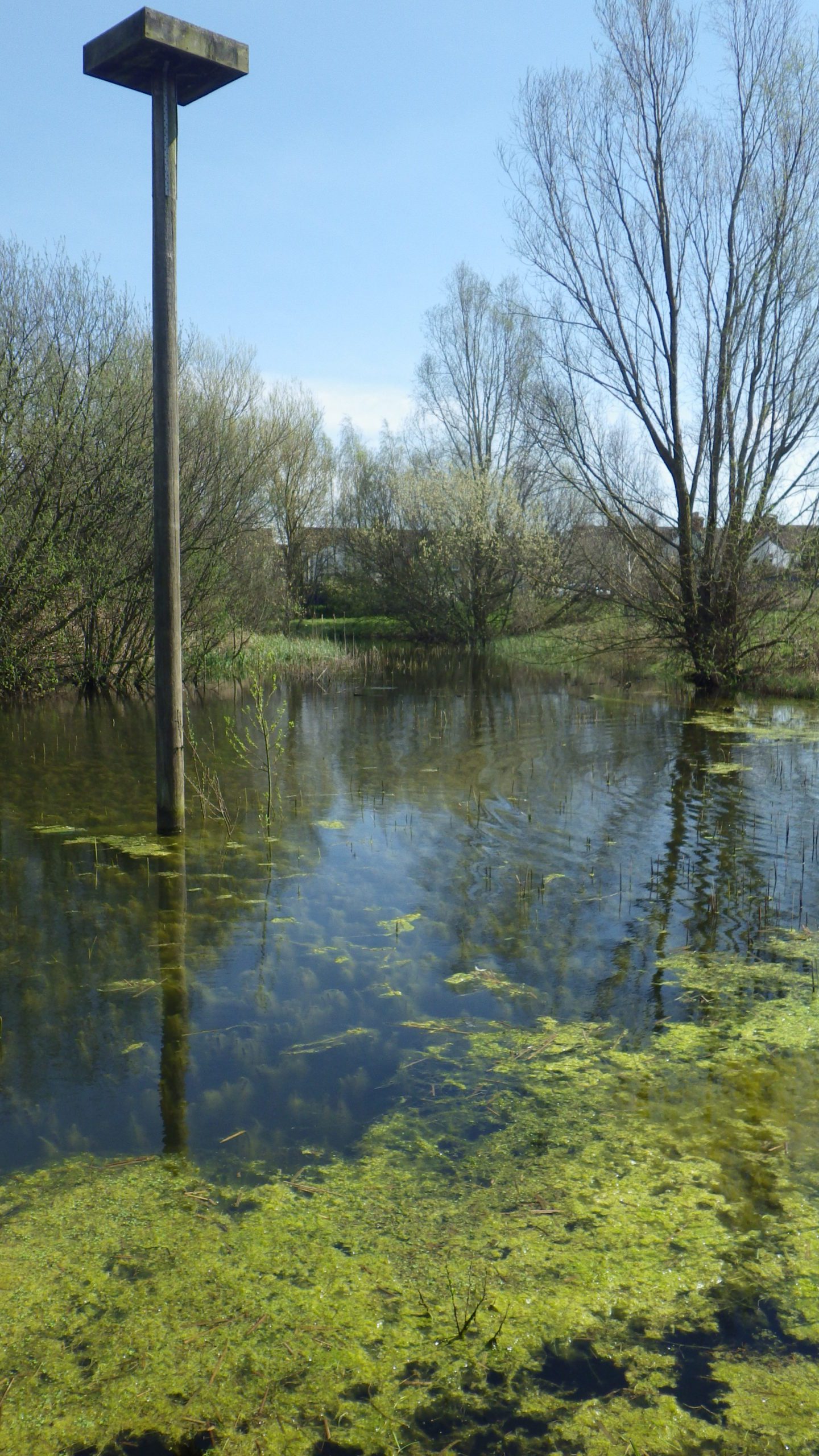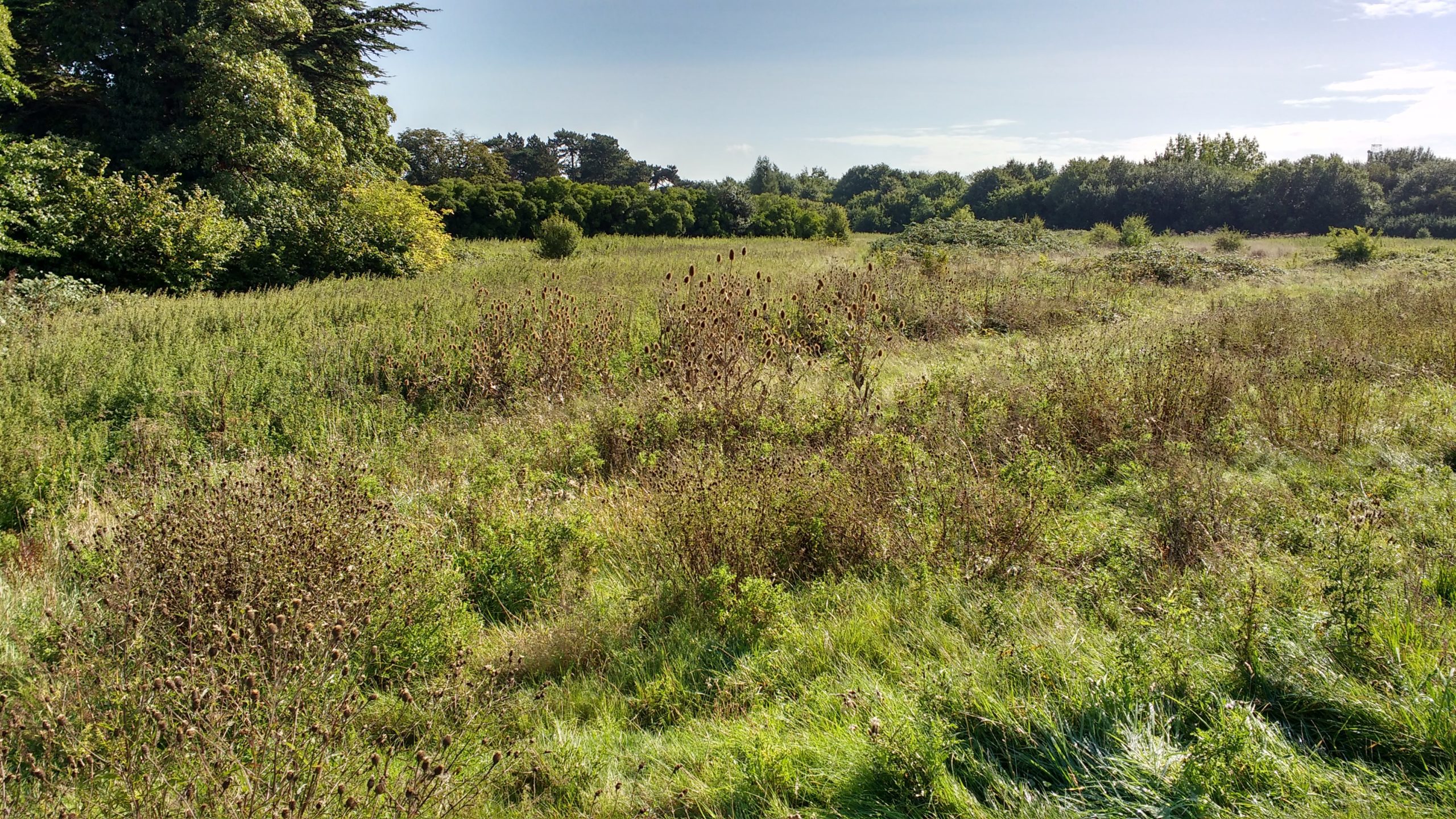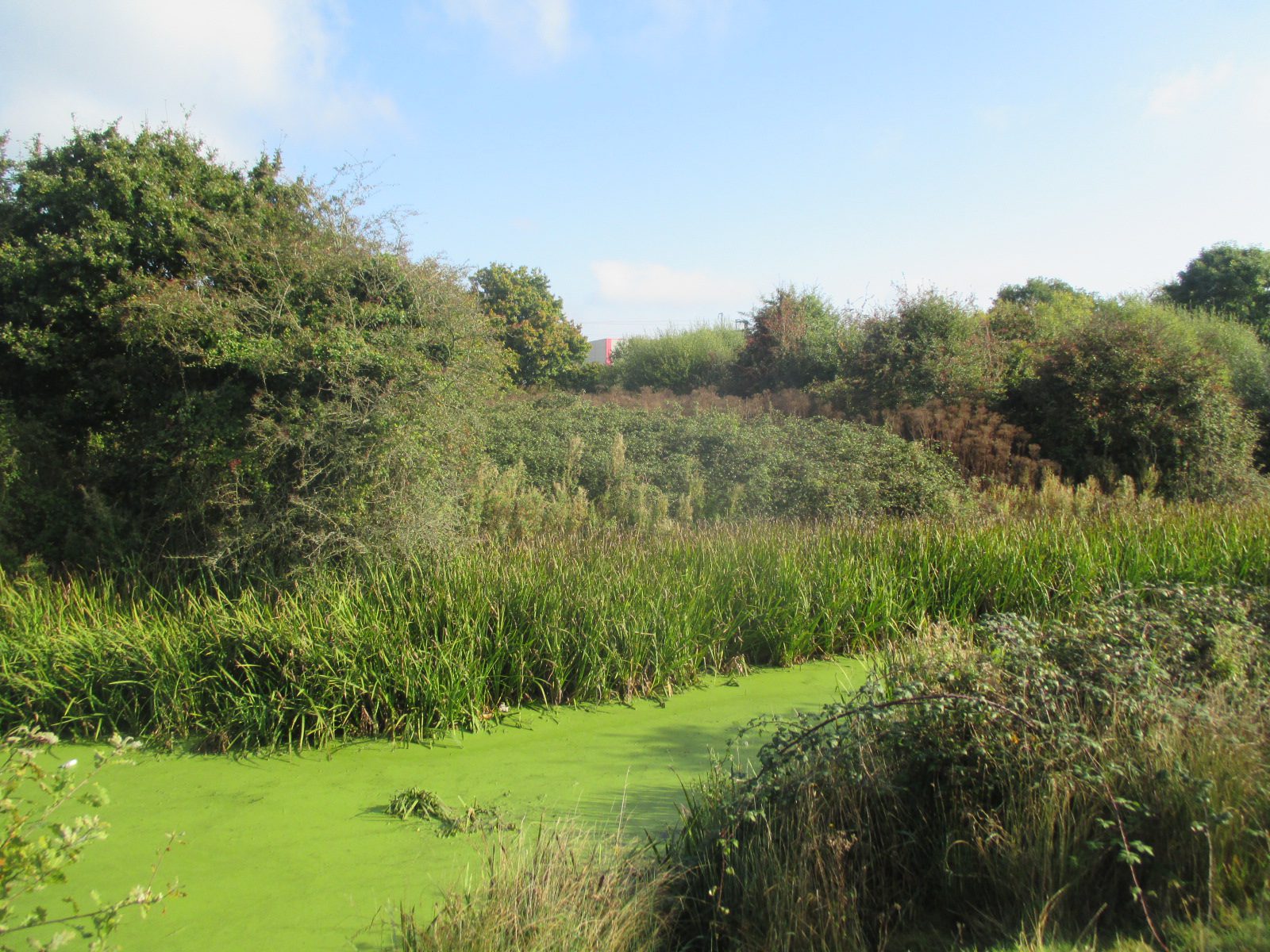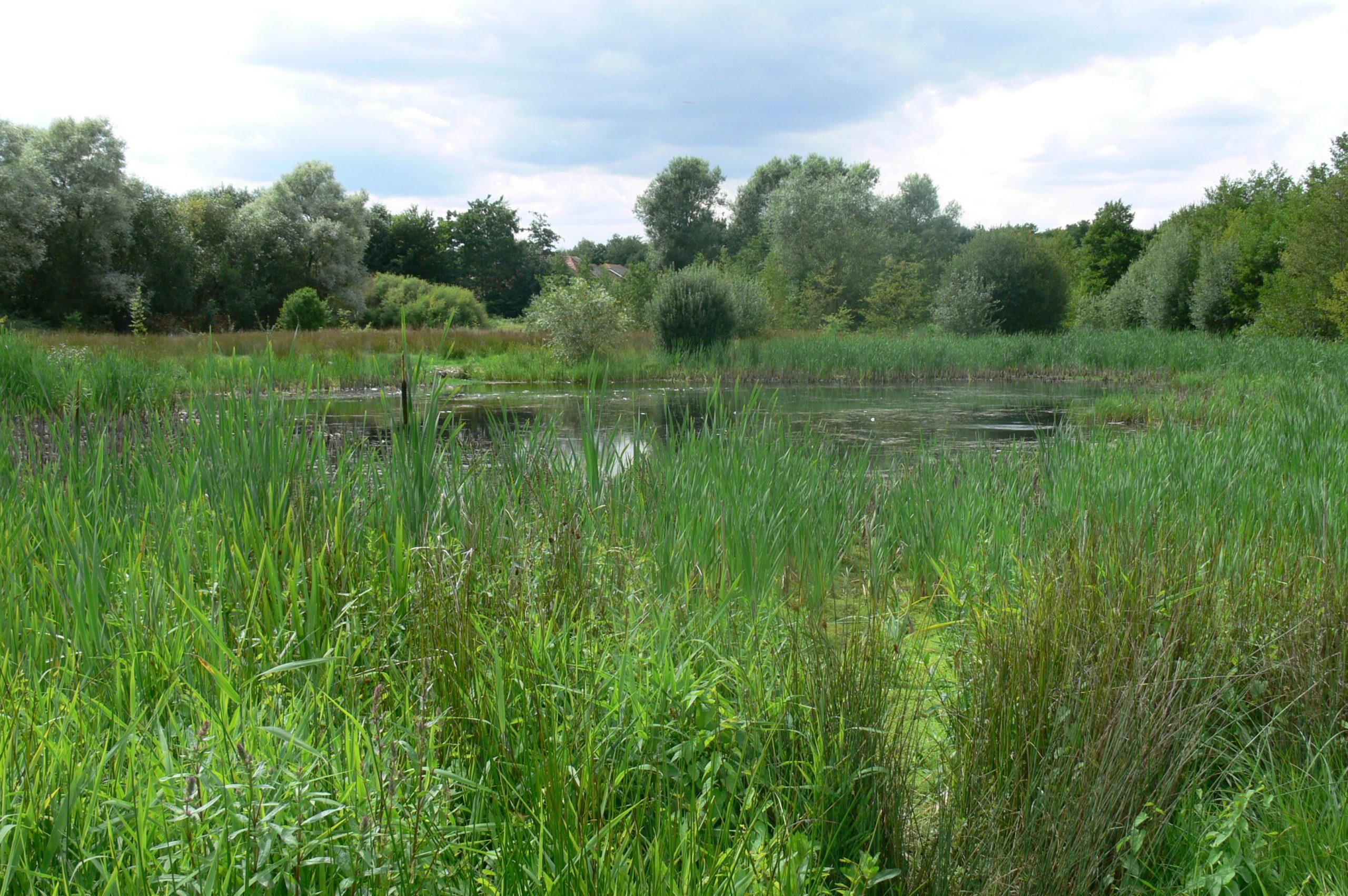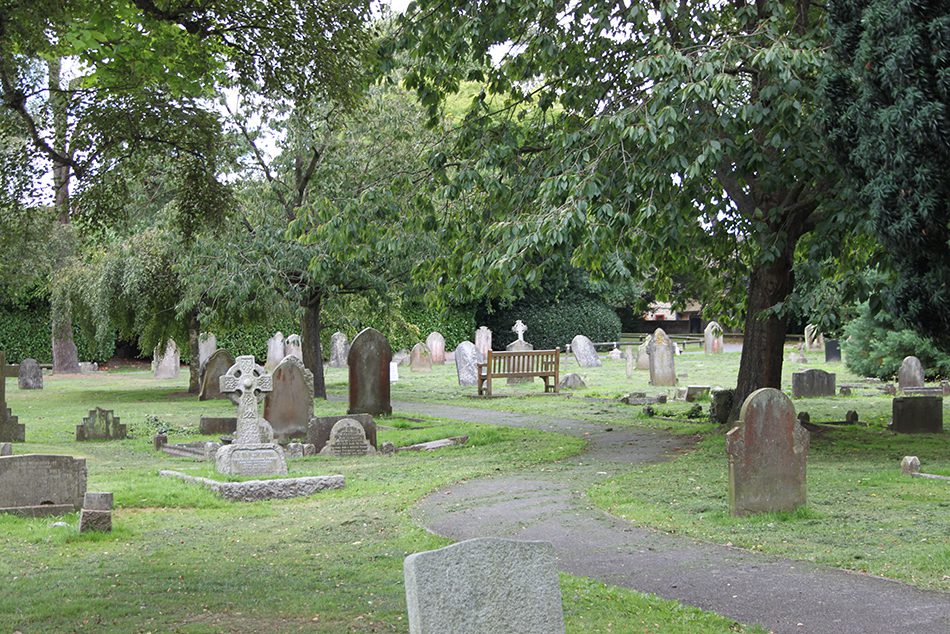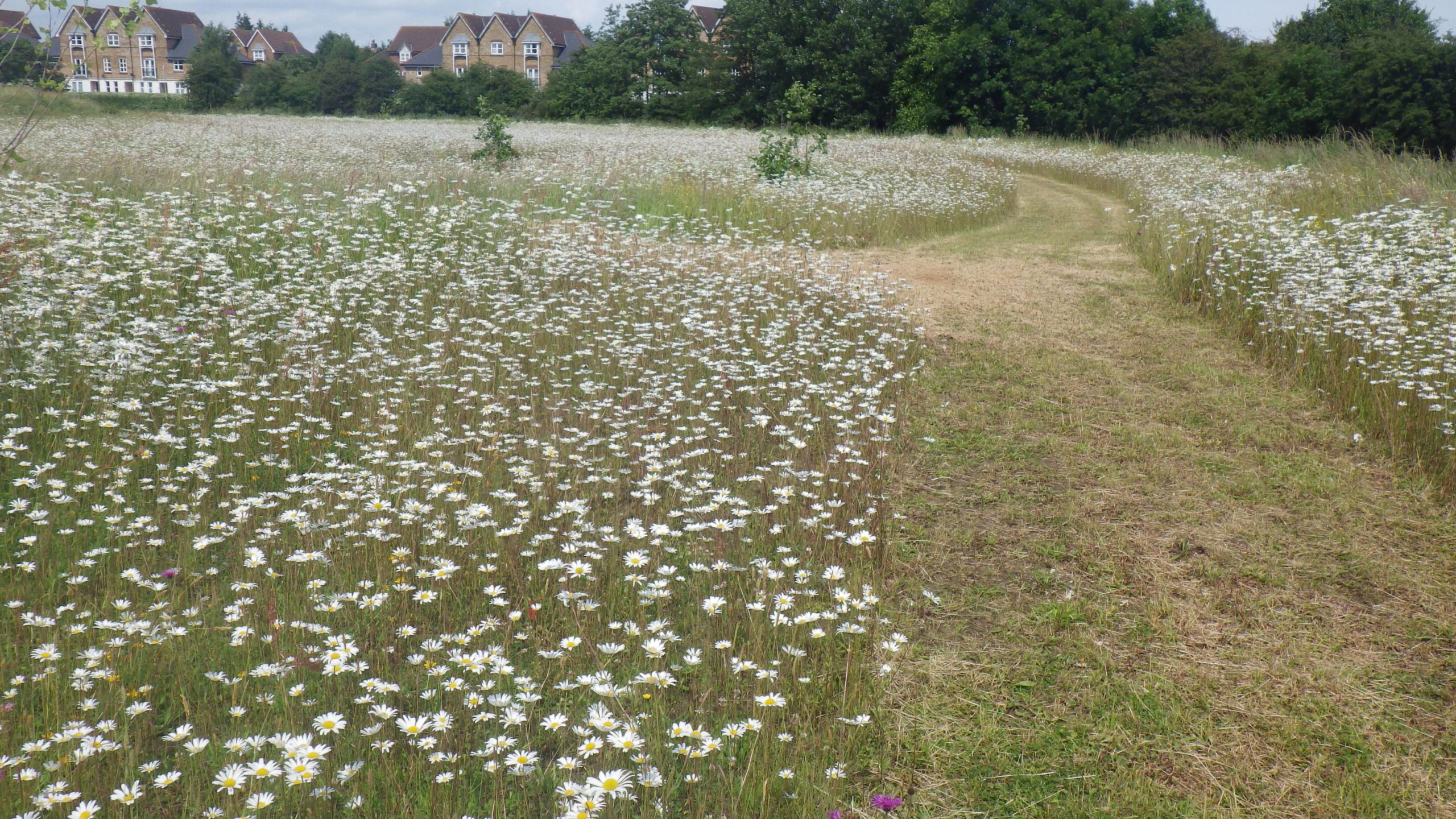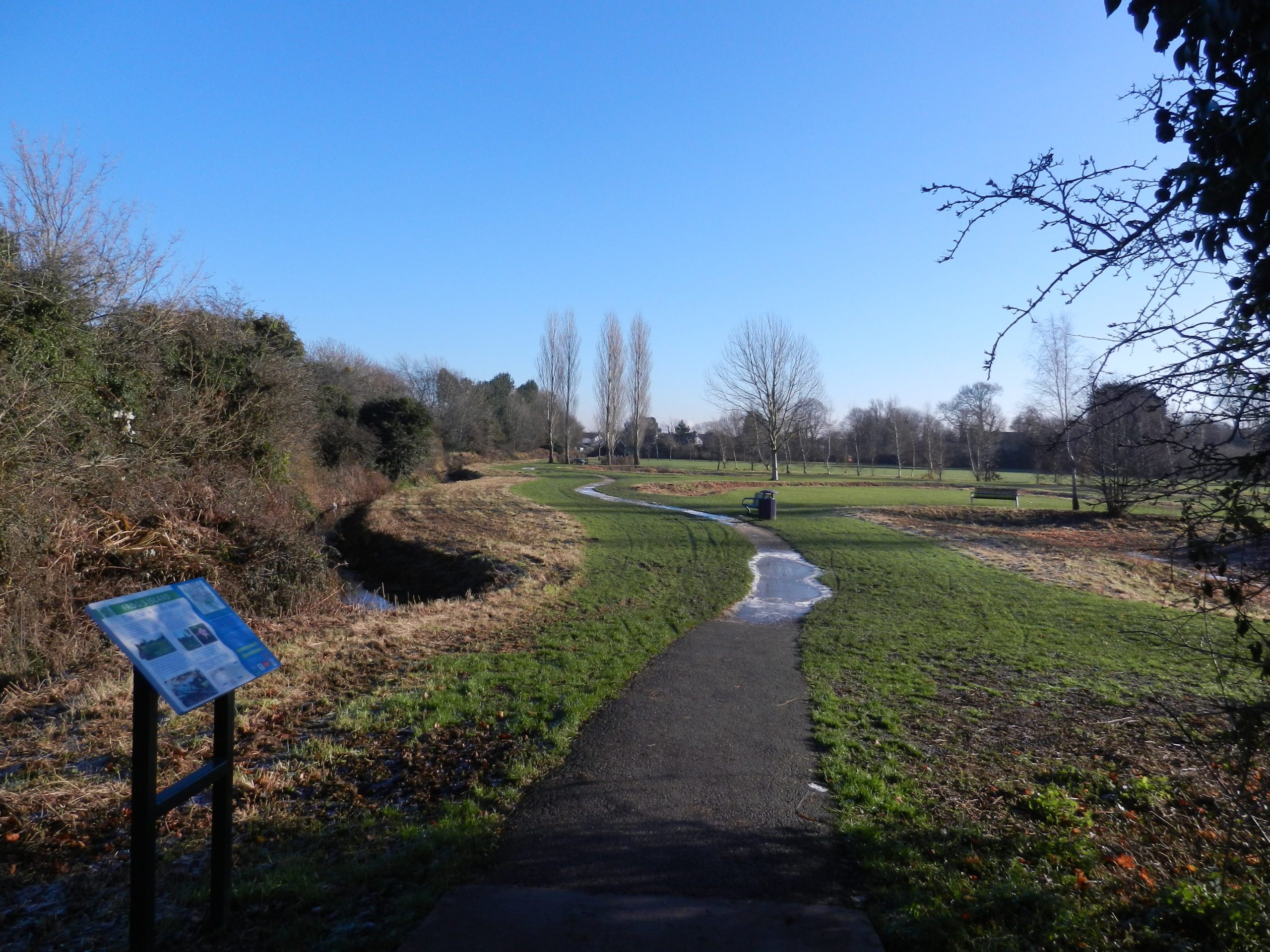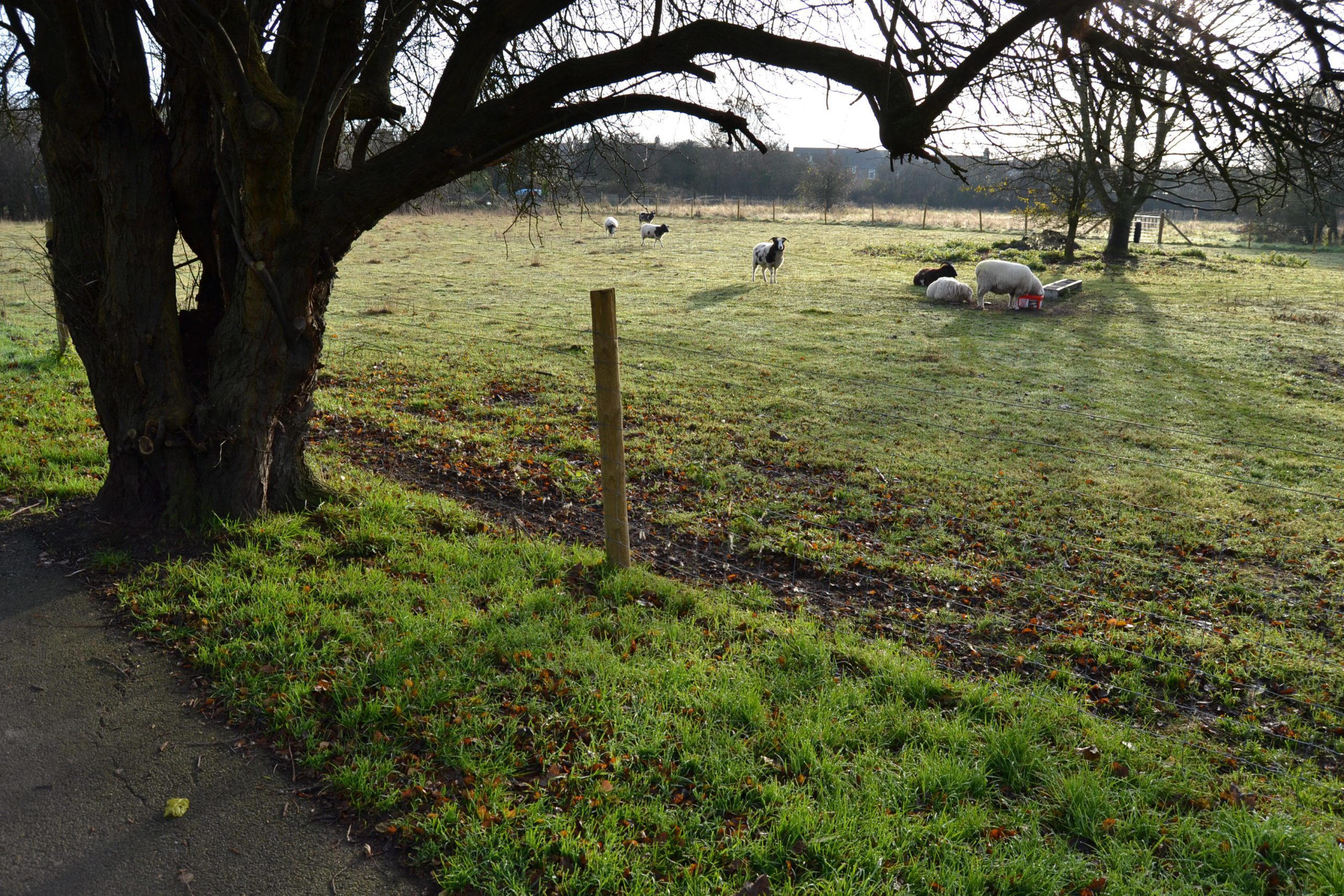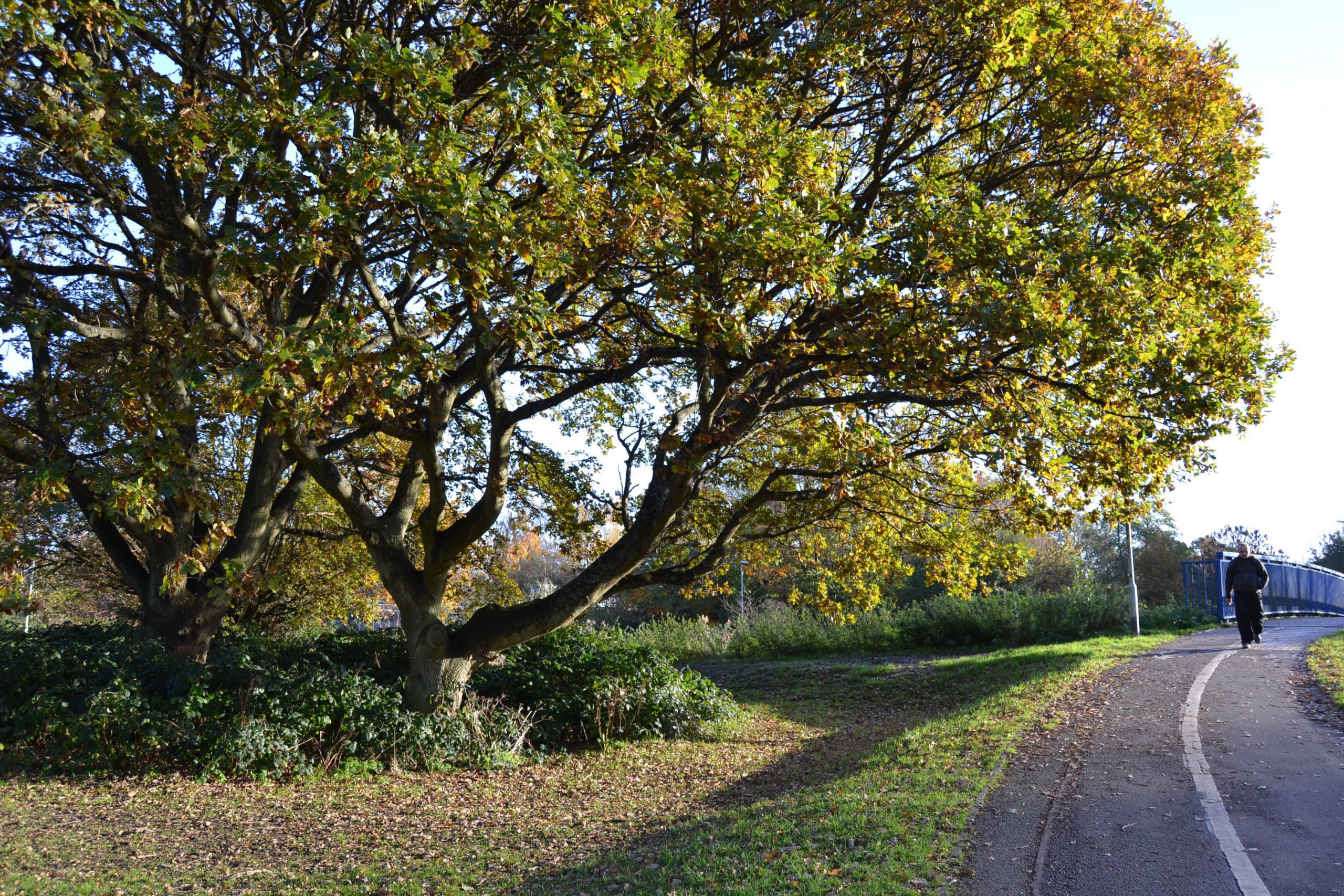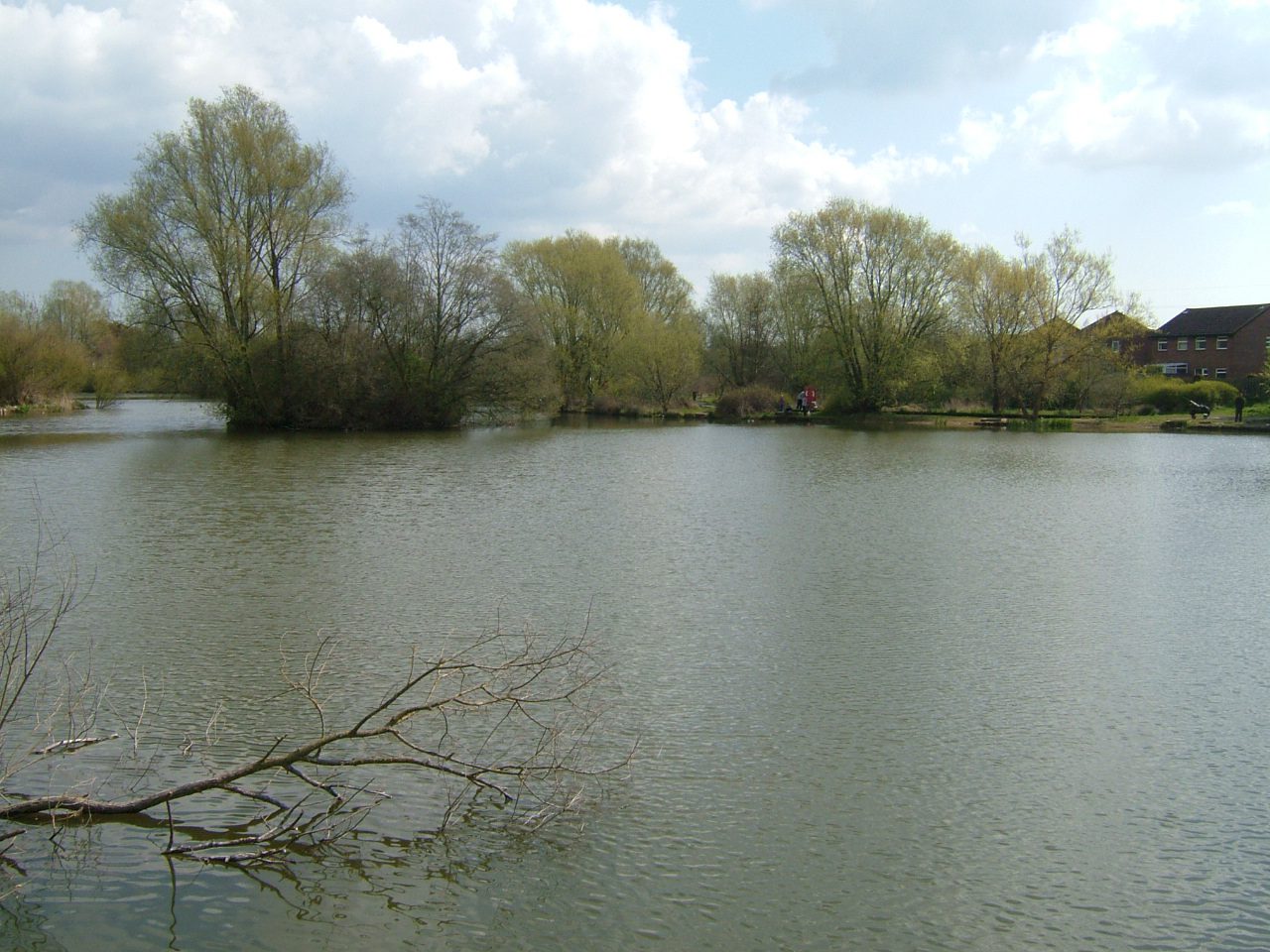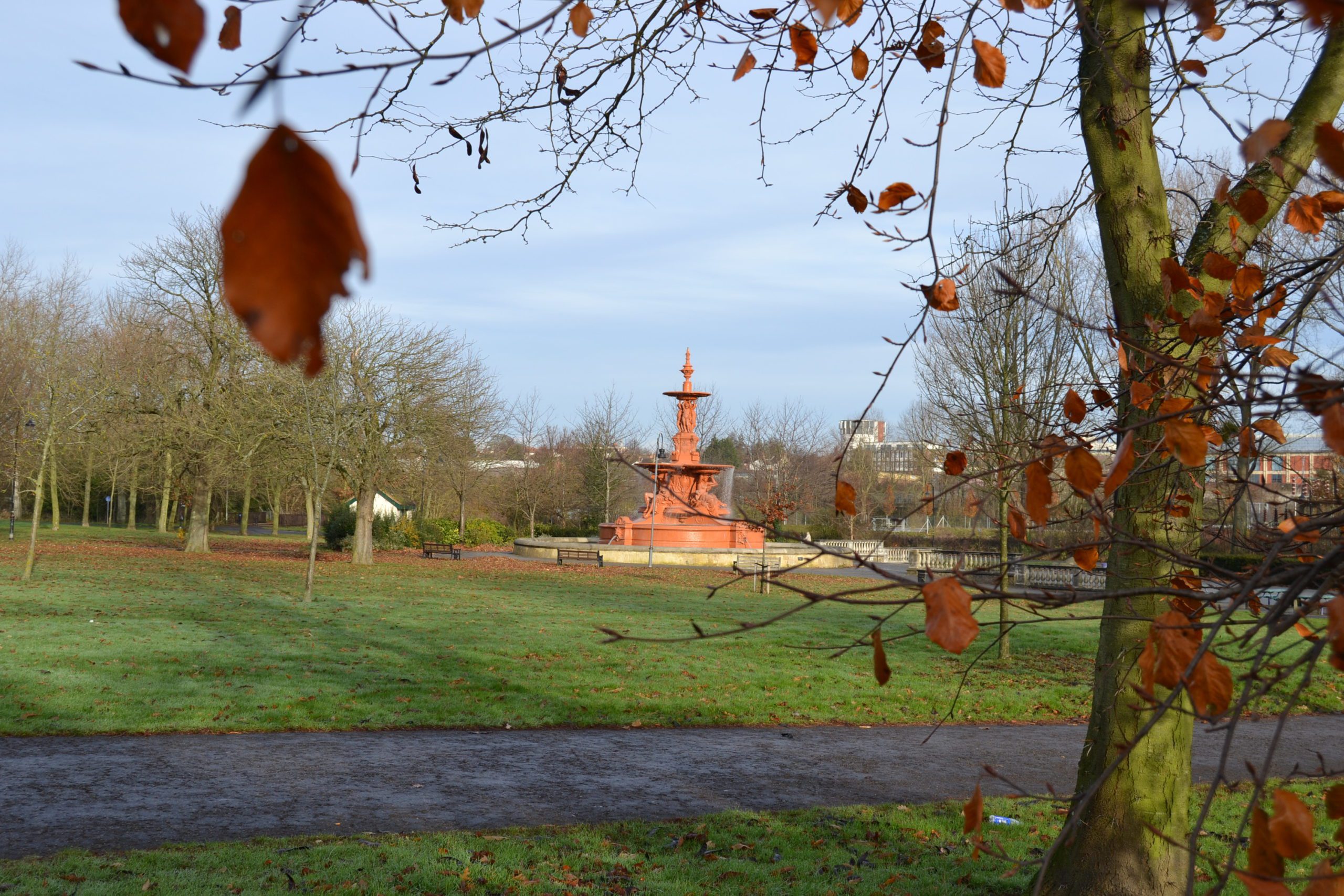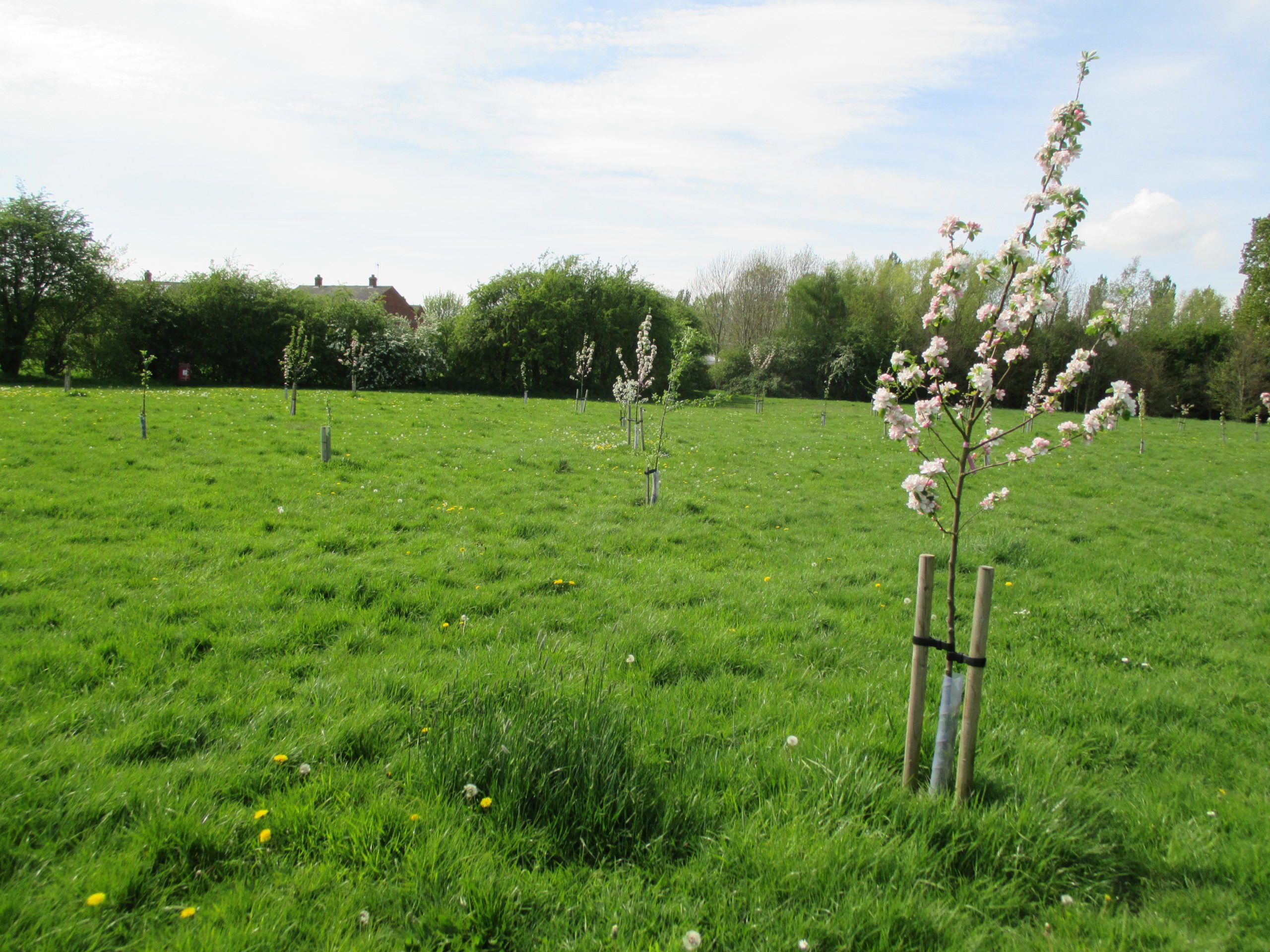Sites in the Ashford Green Corridor
Aylesford Green
A wonderful haven offering refuge from the town nearby, both for people and wildlife. Aylesford Stream passes through Aylesford woodland and grassland, where you may find damselflies, dragonflies, and many birds such as green sandpipers and grey herons!
Bowen’s Field
One of the last areas to have been farmed in Ashford, Bowen’s Field ‘water park’ is a wetland area that serves as flood storage if necessary. The reed beds, pond and ditches are great habitat for wetland species such as banded demoiselle, blue-tailed damselfly, azure damselfly, smooth newt and common frog.
Boys’ Hall
Named after the nearby 17th century manor house built by Thomas Boys. The grassland, trees and orchard form a mosaic of habitats for a range of insects, small mammals and birds. The sunny banks beside the railway are lovely warming areas for reptiles too.
Boys’ Hall Moat
The moat and raised banks of what was a 15th century formal garden (the house is not longer there) form one of the most important heritage sites in the AGC and is a protected Scheduled Ancient Monument. The grassland, trees and shrubs that now remain are also wonderful habitat for wildlife.
Buxford Meadow
At the western end of the AGC this area is rich in wildlife habitat. The meadow, pond, millstream and wet woodland (a rare habitat in Kent) are home to wildfowl, drangonfly, damselfly and many bird species such as tree creeper and black cap. PLEASE NOTE – the pond has invasive plant species so we advise people not to get too close as they may transport them on their boots!
Bybrook Cemetery
A pleasant spot, with many mature trees and a plantation of memorial trees called ‘Cherry Garden Wood’. Although not a green space that is recreational it is nevertheless a lovely place to walk through and provides a valuable link to other green areas so expanding habitat areas for wildlife.
Civic Centre Parks
South Park Meadow was created in 2014, an expanse of wildflower meadow next to the East Stour River . Close to the Stour Centre and Domestic Railway Station – it is a hidden gem.
North Park sits to the north of the Civic Centre. With the Rivers Great and East Stour on either side it has delightful wildlife-inspired seats and picnic tables (artist: Steve Portchmouth) and is popular place for nearby residents and workers to escpae.
Frog’s Island
A large space with meadoow areas, ditches and scrapes (shallow hollows that provide wetland habitat when wet) with hedges and trees lining some of its edges. This area also connects to a community orchard, Frog Orchard. Recreational space and allotments are next to it and collectively they provide the community and wildlife with valuable space.
Gas House Fields
In amongst this built up area these green spaces are quite suprising. A remnant area of farmland manged by South Willesborough and Newtown Young Farmers, reminds you that Ashford was a market town not so long ago. Named after gas works that were build nearby, it is a good area for wildlife, particularly beside Aylesford Stream and by the Spinney – a section of mixed woodland.
Little Burton
An easy-access park situated at the eastern end of the Ashford Green Corridor close to the edge of Ashford. This area also known as Little Burton Farm, has only recently been developed. The green space is however rich with different landscape features and excellent wildlife habitat: woodland, meadow, the Great Stour river, wetland area and small lake. There is ample space for recreational use too.
Queen Mother’s Park
An informal town park which links Bybrook and Kennington to the town centre and beyond. There are some lovely mature trees and meadow along its edge. Woodland along one side screens the park from Henwood Industrial Estate and provides great nesting areas for birds. Crossing the footbridge and along its top path you get great views of the Great Stour as it wends its way, with steep banks on either side.
Singleton Lake
A lake used for fishing, with richly-vegetated lake margins, ideal for wildlife and artists (see if you can spot Anthony Gormely’s sculpture!). It is home to birds such as great crested grebe, swan, coots and other occasional visitors like Egyptian geese. There is a circular walk around the lake with trees and shrubs, and the Great Stour river runs along its northern edge. Although it sits in the midst of a busy residential areal, it is a lovely place for a walk – you might spot bats in the evening! (For information about fishing contact Ashford Angling Society).
South Willesborough Dykes
A large area of open, marshy pastures with dykes and the East Stour river running through it. The Willesborough Green Path, a very popular off road link for residents, runs along its edge near the railway line and a newly planted aea of woodland and hedge. The path verge was sown with wildflower meadow seeds and this whole area is good habitat for a range of species including insects. reptiles and small mammals.
Victoria Park
This formal park lies close to the town centre, created as a much-needed site of leisure in the fast growing Ashford of the victorian period, and of today. An important and historic feature is the landmark Hubert Fountain, Many special specimen trees, a number which have been dedicated, can be found around the park, plus river views and play areas.
Watercress Field
Named after a farm and the watercress that would have been grown here in the chalk river waters of the Great Stour. It is a large open space with areas of trees and lots of room for recreation. The Great Stour meanders along its northern edge and provides a fantastic widlife corridor and habitat so close to town. The Watercress Orchard is a traditional, community orchard that was planted in 2012.
